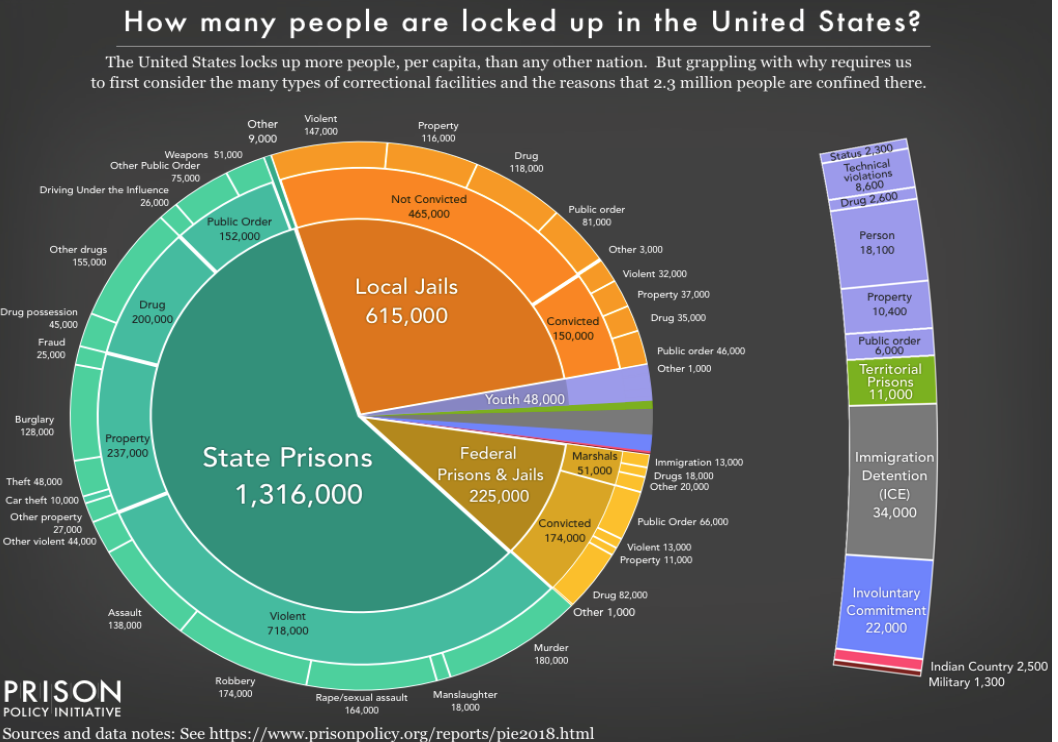9.3. Probation
David Carter
Probation is arguably the oldest, and certainly the largest, of the intermediate sanctions. Its roots stem from concepts of common law from England, like many of our other legal/correctional practices. In early American courts, a person was able to be released on their recognizance, if they promised to be responsible citizens and pay back what they owed. In the early 1840s, John Agustus, a Boston bootmaker was regularly attending court and began to supervise these individuals as a Surety. A Surety was a person who would help these individuals in court, making sure they repaid these costs to the courts. We would consider John Augustus as the Father of Probation, for this work in the courts in Boston in the 1840s and 1850s. Augustus, pictured below, would take in many of these individuals, providing options like work and housing, to help ensure these individuals would remain crime-free and pay back society. He continued this practice for nearly two decades, effectively becoming the first probation officer. For a more lengthy historical discussion of probation, see the history of probation at https://probation.smcgov.org/history-probation.

Probation is a form of a suspended sentence, in that the jail or prison sentence of the convicted offender is resuspended, for the privilege of serving conditions of supervision in the community. Conditions of probation often include reporting to a probation officer, submitting random drug screens, not consorting with known felons, paying court costs, restitution, and dama attendingtend AA or NA courses, as well as other conditions. Probation lengths vary greatly, as do the conditions of probation placed on an individual. Almost all people on probation will have at least one condition of probation. Some have many conditions, depending on the seriousness of the conviction, while others are just a blanket condition that is imposed on all in that jurisdiction, or for that conviction type. Juvenile Probation Departments were within all States in the 1920s, and by the middle of the 1950s, all States had adult probation.
Probation Officers
Probation officers usually work directly for the state or federal government, but that can be directed through local or municipal agencies. Many Counties will have a community justice level structure where probation offices operate. Within these offices, probation officers will be assigned cases (caseload), in terms of the probationers, they will manage. The volume of cases in a probation officer’s caseload can vary from just a few clients if they are high-need/risk clients, to several hundred probationers. It depends on the jurisdiction, the structure of the local PO office, and the abilities of the probation officers themselves.
The role of the probation officer is complex, and sometimes diametrically opposing. A PO’s primary function is to enforce compliance of individuals on probation. This is done through check-ins, random drug screenings, and enforcement of other conditions that are placed on the probationers. Additionally, the PO may go out into the field to serve warrants, do home checks for compliance, and even make arrests if need be.
However, at the same time, a probation officer is trying to help individuals on probation succeed. This is done by trying to help individuals get jobs, get schooling, enter into substance or alcohol programs, and generally support people on probation to be successful. This is why the job of the PO is complex, as they are trying to be supportive, but also have to enforce compliance. Many equate this to kind of like being a parent. Recently, there has been a movement within probation to have probation officers act more like coaches than just disciplinarians. Here is a talk about how POs can view themselves as coaches to enact positive change within individuals on probation:
The other primary function of a probation officer is to complete PSI reports on individuals going through the court process. A PSI or Pre-Sentence Investigation report is a psycho-social workup on a person headed to trial. It includes basic background information on an individual, such as age, education, relationships, physical and mental health, employment, military service, social history, and substance abuse history. It also has a detailed account of the current offense, witness or victim impact statements of the event, and prior offenses (criminal records), which are tracked across numerous agencies. Finally, the PSI also has a section that is devoted to a plan of supervision or recommendations, which are created by the PO. These usually list out the conditions of probation recommendations, if probation is to be granted. Judges use this information during sentencing discussions and hearings, and will usually follow these recommendations often (around 85% of the time). Thus, many of the conditions of probation are prescribed by the PO.
Individuals on Probation
As stated, there are several million people on probation, serving various lengths of probation, and under numerous conditions or condition types. Additionally, the convictions that place individuals on probation vary, including misdemeanors and felonies. Probationers serve their probation at the state level, and there is even federal probation. As depicted below, it is easy to see how much probation is used in the United States.
Use of Probation in the U.S.

Probation is not a right, and it is not a suspended sentence. It is a privilege, but it most certainly comes with conditions for the suspension of incarceration. Due to how cheap probation is, relative to jail or prison, and the ability for lower-risk individuals to maintain connections within their community, millions of people will be on probation in the United States at any given time.
Other important factors that help to decide if a person warrants probation are within the PSI and other assessments are done on the individual. If the person is, a prosocial person, has an education and a job, has a family, these would all be considered as ties to the community. These ties to the community could weaken or break if a person was incarcerated. Thus, providing a sanction while allowing the person to stay in the community is often the approach that is utilized within probation and other intermediate sanctions.
Probation Success
There are mixed reviews about probation. Recently, the Bureau of Justice Statistics (2018 report, for 2016. [1] listed the successful completion rate at about 56%. In years past, this number has been reported higher, upwards of 65%, depending on the years 2008-2013. [2] There are a host of reasons listed for unsuccessful completion, which include: incarcerated on a new sentence/charge, or placement for the current sentence/charge, absconding (fleeing jurisdiction), discharged to warrant or detainer, other unsatisfactory reason, death, or some other unknown or not reported reason. Unsuccessful completion can produce some different responses but can include a concept called tourniquet sentencing. Tourniquet sentencing is where the restrictions of a level of sanction are increased, due to non-compliance, to force compliance. If an individual on probation is not adhering to the conditions of probation, a PO can recommend a probation revocation hearing. This bench hearing can lead to an informal admonishment by a judge, an increase in the sanctions or sanction lengths, an increased level of control (moving from regular probation to intensive supervised probation), or even placement in a secure facility (jail or prison), all depending on the infraction of the condition of probation that has been violated. Many go from regular probation to ISP, to force compliance through increased monitoring.
Intensive Supervised Probation
Intensive Supervision Probation (ISP) began in the late 1950s, and early 1960s, in California. Their basic premise was to allow caseworkers (POs) to have smaller caseloads and increase the level of treatment across offenders. As stated, many promised multiple success measures. However, if an individual was revoked because of a technical violation due to an increase in control, they were not seen as a failure. Rather, they were seen as a success because of the way the public was served by the recidivism. However, this went directly against the notion that ISPs could save money. Because of these problems, the earlier forms of ISPs may have become less popular. In the 1980s, a newer model of the ISP was created in Georgia. More emphasis was placed on the control aspect rather than on treatment. Further, less emphasis was placed on the reduction of money saved.
ISP and regular probation are similar, except for the frequency of contacts with POs, the increases in surveillance and monitoring, and usually the volume of conditions. Rather than meeting a PO once a month in regular probation, a person on ISP would likely be meeting with their PO weekly, or even more frequently. Additionally, individuals on ISP normally submit drug screens weekly. The increased conditions of supervision more frequently include more substance abuse treatment, either in the form of AA, NA, or some other residential or outpatient substance abuse treatment programs. Thus, the core difference is about the increased level of surveillance and control over the offender.
ISP Success
While initial praise of the newer model for its increase in control was evidenced by its rapid spread through the States, some researchers questioned their effectiveness. In one of the largest studies of ISPs, in conjunction with the RAND Corporation. [3] They examined the effectiveness of ISPs in reducing recidivism and saving costs. In a random sample of 14 cities across 9 States, they evaluated the reductions of recidivism against a sample of regular probationers. Their findings suggested that there were higher amounts of technical violations, which were probably substance violations, but there were no significant differences between control-centered ISPs and regular probation, as far as new arrests. Moreover, when looking at outcomes over 3 years, they found that recidivism rates were slightly higher for these ISPs (39%), vs. regular probation (33%). Also, there were no substantive cost savings. Other studies have produced similar findings as to the effects of non-treatment-oriented ISPs. While these findings might be better than prison recidivism rates, there were no reductions in prison overcrowding, which was also one of the intents of ISP.
- Kaeble, D. (2018). Probation and Parole in the United States, 2013. U.S. Department of Justice, Office of Justice Programs, Bureau of Justice Statistics, April 2018, NCJ 251148 https://www.bjs.gov/content/pub/pdf/ppus13.pdf ↵
- Huberman, E. J., & Bonczar, T. P. (2014). Probation and parole in the United States, 2013. U.S. Department of Justice, Office of Justice Programs, Bureau of Justice Statistics, October 2014, NCJ 248029 https://www.bjs.gov/content/pub/pdf/ppus13.pdf ↵
- Petersilia, J. R., & Deschenes, E. (2004). Evaluating intensive supervision probation/parole (ISP) for drug offenders. Santa Monica, CA: RAND Corporation. https://www.rand.org/pubs/reprints/RP168.html ↵

